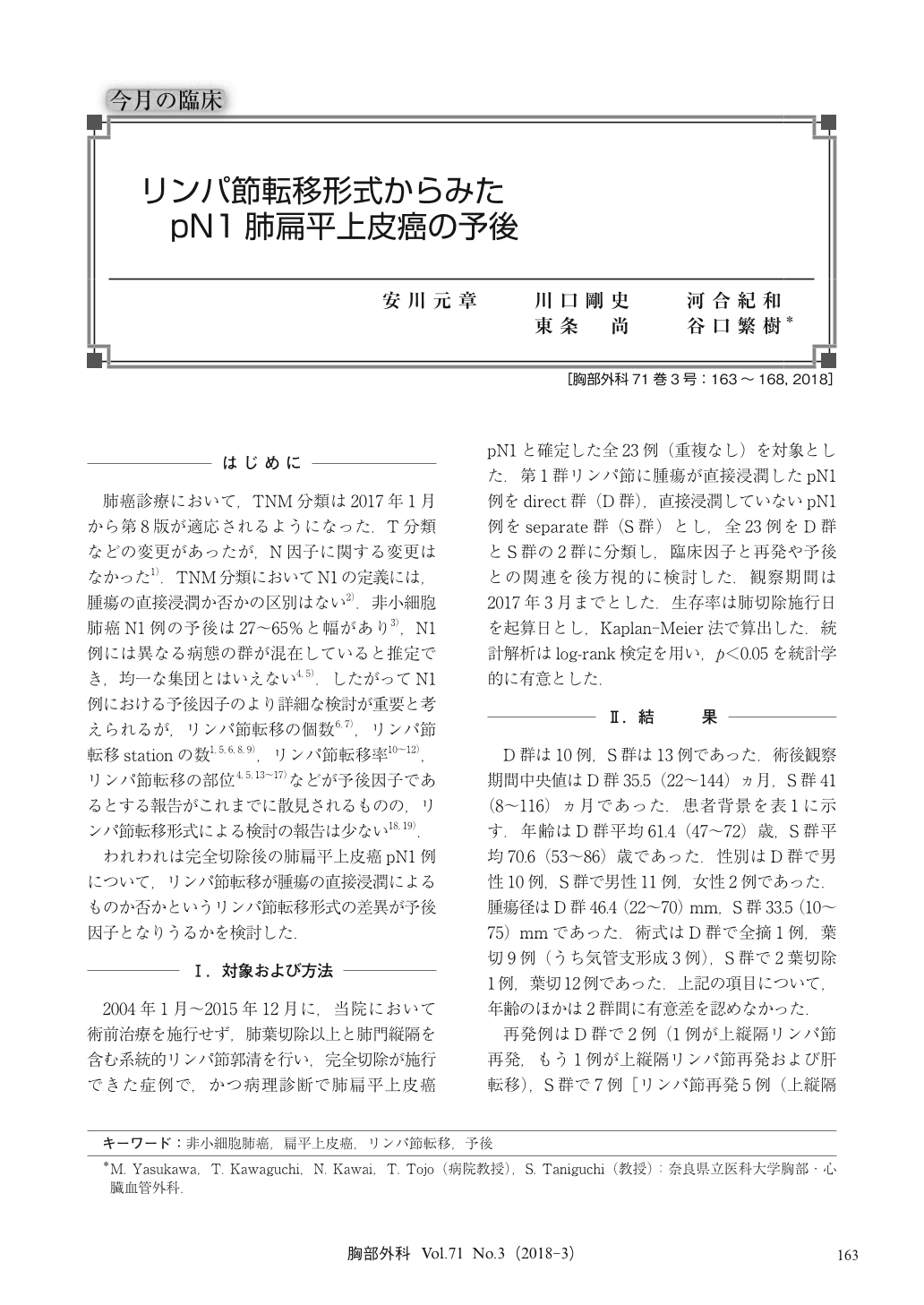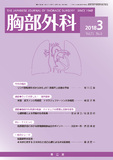Japanese
English
- 有料閲覧
- Abstract 文献概要
- 1ページ目 Look Inside
- 参考文献 Reference
肺癌診療において,TNM分類は2017年1月から第8版が適応されるようになった.T分類などの変更があったが,N因子に関する変更はなかった1).TNM分類においてN1の定義には,腫瘍の直接浸潤か否かの区別はない2).非小細胞肺癌N1例の予後は27~65%と幅があり3),N1例には異なる病態の群が混在していると推定でき,均一な集団とはいえない4,5).したがってN1例における予後因子のより詳細な検討が
According to the tumor, node, metastasis (TNM) classification of the Union for International Cancer Control (UICC) and the International Association for the Study of Lung Cancer (IASLC), N factor is defined by the anatomic extent of the metastatic lymph nodes, but is not related to the metastatic pattern. N1 is defined as “metastasis in ipsilateral peribronchial and/or ipsilateral hilar lymph nodes and intrapulmonary nodes, including involvement by direct extension”.Lymph node involvement is one of the most important prognosistic factors in non-small cell lung cancer patients. Squamous cell carcinoma (SCC) arises in the central airway and directly invades adjacent lymph nodes more frequently compared to the other histologic types. We retrospectively evaluated the prognostic impact of lymph node involvement patterns in pulmonary pN1 squamous cell carcinoma (SCC) patients. The clinical records of 23 patients with pN1 SCC who underwent complete resection and systematic lymph node dissection at our institute were retrospectively reviewed. We classified the patient into 2 N1 groups based on the nodal involvement pattern:metastatic N1 nodes involved directly by the main tumor (direct group) and metastatic N1 nodes not directly involved by the main tumor (separate group). The direct group consisted of 10 patients, and the separate group comprised 13 patients. There were no significant difference in the gender, tumor size, surgical procedure, and number of metastatic lymph nodes. Overall survival and disease-free survival curves were plotted using the Kaplan-Meier method, and the statistical differences between both groups was determined by the log-rank test. P values <0.05 were considered statistically significant. The direct group had a much better 5-year overall survival rate of 100.0% compared with 55.9% for the separate group (p=0.037). The N factors in TNM classification are defined only by anatomical location. However, our results suggest that the mode of nodal involvement in pulmonary pN1 SCC might be a prognostic factor. Accordingly, it is likely that biological behaviors are different between direct metastasis and separate metastasis. Since there are some limitations in this study:its retrospective design and small sample size, the clinical implication of direct extension to N1 lymph nodes needs to be confirmed by a large scale prospective study in the future.

© Nankodo Co., Ltd., 2018


